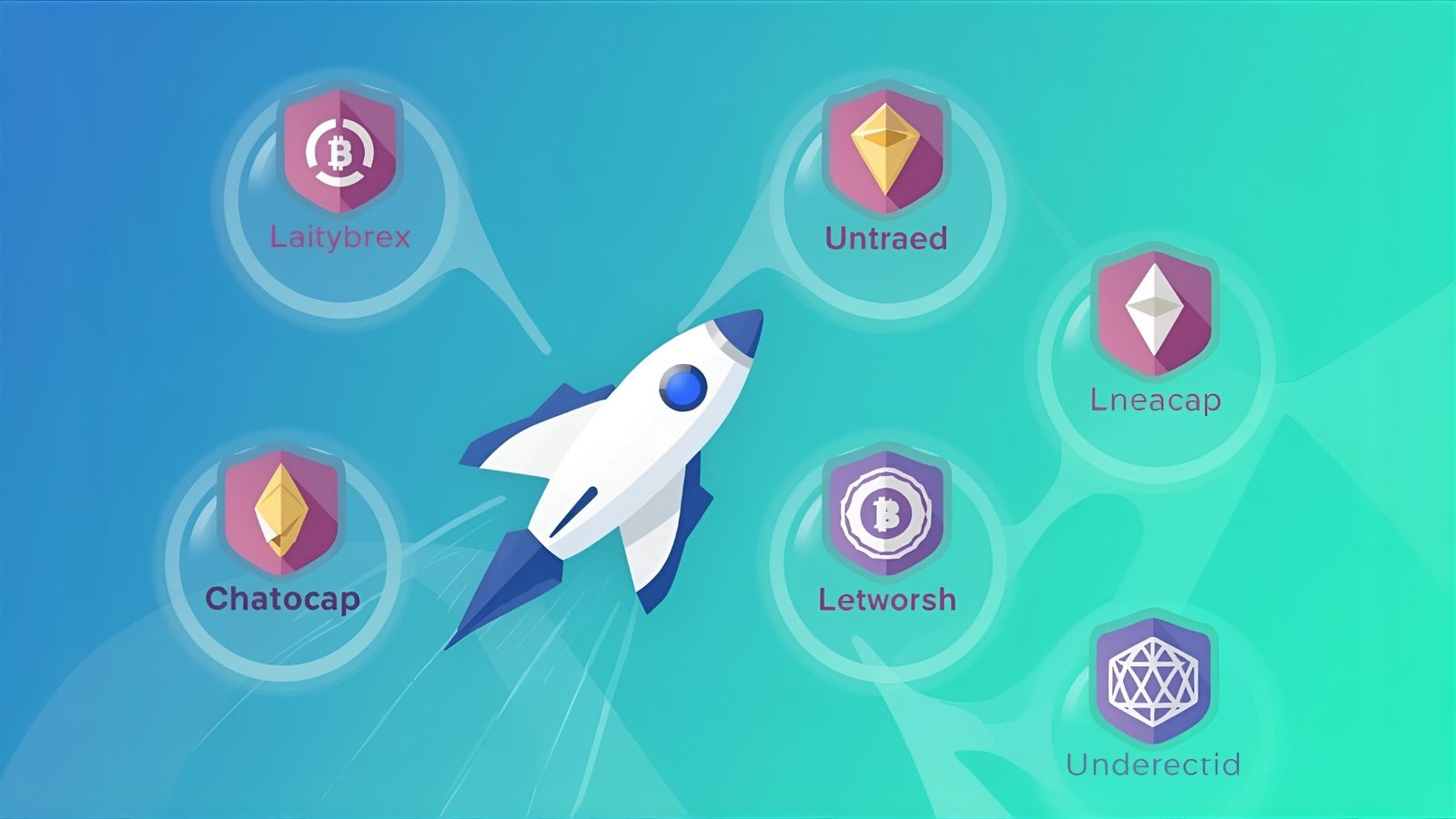The cryptorank airdrop phenomenon has emerged as one of the most sought-after methods for acquiring free tokens. Whether you are a seasoned blockchain enthusiast or just beginning your journey into decentralized finance, understanding how airdrop campaigns work through platforms like CryptoRank can open doors to substantial earning potential while helping you discover promising new projects before they gain mainstream attention.
CryptoRank has established itself as a trusted analytics platform within the cryptocurrency ecosystem, providing comprehensive data on token prices, market capitalization, and emerging blockchain projects. Beyond its core analytics functions, the platform has become a vital resource for users seeking information about token distribution events and free cryptocurrency opportunities. This detailed guide will walk you through everything you need to know about leveraging CryptoRank for airdrop participation, from understanding the fundamental concepts to implementing advanced strategies that maximize your rewards while minimizing risks.
Understanding CryptoRank and Its Role in the Airdrop Ecosystem
CryptoRank operates as a comprehensive cryptocurrency tracking and analytics platform that aggregates data from thousands of digital assets across multiple blockchain networks. The platform distinguishes itself by offering detailed insights into initial coin offerings, token economics, and distribution mechanisms that newer projects employ to build their communities. Unlike generic cryptocurrency listing websites, CryptoRank specializes in identifying and cataloging early-stage opportunities that many investors might otherwise overlook.
The platform’s airdrop section functions as a centralized hub where blockchain projects announce their token giveaway campaigns to attract early adopters. These campaigns serve multiple purposes for project developers, including building an initial user base, creating buzz around new launches, and distributing governance tokens to decentralize decision-making power. For participants, a cryptorank airdrop represents an opportunity to receive valuable digital assets simply by completing specific tasks or meeting certain eligibility criteria.
What sets CryptoRank apart from other airdrop aggregators is its rigorous vetting process and comprehensive project information. Each listed opportunity includes detailed descriptions of the project’s goals, tokenomics, team backgrounds, and participation requirements. This transparency helps users make informed decisions about which airdrops deserve their time and attention, significantly reducing exposure to potential scams or low-quality projects that plague the cryptocurrency space.
How Airdrop Campaigns Work Through CryptoRank

Airdrop campaigns distributed through CryptoRank typically follow structured formats designed to ensure fair distribution while achieving the project’s marketing objectives. Understanding these mechanisms is essential for anyone looking to participate successfully in crypto reward programs. Most campaigns fall into several distinct categories, each with unique participation requirements and reward structures.
Standard airdrops represent the most straightforward type, where users simply need to register with their wallet addresses and complete basic verification steps. These campaigns often target users who hold specific cryptocurrencies in their wallets or who have accounts on particular exchanges. The eligibility criteria might include minimum holding periods or transaction history requirements to prevent abuse and ensure tokens reach genuine community members rather than automated bot accounts.
Task-based airdrops require more active participation from users. These campaigns ask participants to engage with the project through social media platforms, join community channels, or complete educational modules about the project’s features and benefits. A typical cryptorank airdrop of this nature might require following the project on Twitter, joining their Telegram group, retweeting announcement posts, or creating original content that promotes awareness. While more time-intensive, these campaigns generally offer higher reward values to compensate for the additional effort required.
Holder airdrops represent another popular category where tokens are distributed to users who already possess certain cryptocurrencies in their wallets. These retroactive distributions reward loyal community members and encourage long-term holding behavior. Projects might snapshot blockchain data at specific times to identify eligible addresses, then distribute new tokens proportionally based on existing holdings. This approach helps ensure that rewards reach users who are genuinely invested in the broader cryptocurrency ecosystem rather than opportunistic participants who jump between projects seeking quick profits.
Benefits of Participating in CryptoRank Airdrop Programs
Engaging with cryptorank airdrop opportunities offers numerous advantages beyond simply receiving free tokens. The most obvious benefit is financial, as successful airdrop campaigns can distribute tokens that appreciate significantly in value after public trading begins. Historical examples include projects that airdropped tokens initially worth a few dollars that later appreciated to hundreds or even thousands of dollars per recipient, creating life-changing wealth for early participants who held their rewards.
Beyond immediate financial gains, airdrop participation provides educational value that helps users understand emerging blockchain technologies and project mechanics. By researching projects before participating in their token distribution events, users naturally develop deeper knowledge about different blockchain platforms, consensus mechanisms, and use cases that drive the industry forward. This learning process proves invaluable for making better investment decisions and identifying genuinely innovative projects among the thousands of new launches each year.
Airdrop participation also offers diversification benefits for cryptocurrency portfolios. Rather than purchasing tokens directly, users can accumulate exposure to multiple projects simultaneously through strategic airdrop farming. This approach spreads risk across numerous assets while requiring minimal capital investment. Even if most airdropped tokens fail to appreciate significantly, the few successful projects can generate returns that far exceed the time invested in participation, creating an asymmetric risk-reward profile that appeals to savvy cryptocurrency enthusiasts.
Community building represents another crucial benefit that extends beyond individual financial gain. By participating in crypto reward programs through CryptoRank, users become early members of emerging communities where they can influence project development through governance voting and direct feedback. These early-stage relationships often lead to additional opportunities as projects mature, including beta testing privileges, enhanced rewards for continued engagement, and recognition within the community that can translate to professional opportunities in the blockchain industry.
Step-by-Step Guide to Claiming Airdrops on CryptoRank
Successfully claiming rewards from cryptorank airdrop campaigns requires careful preparation and attention to detail. The process begins with establishing a secure foundation of cryptocurrency wallets and accounts that meet most projects’ participation requirements. Users should create dedicated wallets specifically for airdrop participation to separate these activities from their main investment holdings, reducing security risks and simplifying tracking of claimed rewards.
Creating accounts on major social media platforms forms the next critical step, as most airdrop campaigns require Twitter, Telegram, or Discord engagement. These accounts should appear genuine and active rather than obviously created solely for airdrop farming, as many projects implement verification systems that filter out suspicious accounts. Building legitimate social media presences with actual engagement and followers before beginning intensive airdrop participation significantly improves approval rates and reduces the likelihood of disqualification.
Once the foundational infrastructure is established, users can navigate to the CryptoRank airdrop section and browse available opportunities. The platform categorizes campaigns by status, including upcoming, active, and completed airdrops, allowing users to plan their participation strategically. Each listing provides comprehensive details about participation requirements, estimated token values, distribution timelines, and project backgrounds. Careful review of this information helps users prioritize high-quality opportunities that align with their interests and risk tolerance.
After selecting suitable campaigns, participants must complete the specific tasks outlined in each token giveaway campaign. This typically involves visiting the project’s official airdrop page, connecting wallet addresses, and verifying completion of social tasks through specialized platforms. Users should maintain detailed records of their participation, including confirmation emails, transaction hashes, and screenshots proving task completion. This documentation proves essential if disputes arise during the distribution phase or if projects implement delayed distribution schedules.
Common Mistakes to Avoid When Pursuing Airdrops
Despite the seemingly straightforward nature of cryptorank airdrop participation, numerous pitfalls can reduce success rates or expose users to unnecessary risks. One of the most common mistakes involves sharing private keys or seed phrases with airdrop platforms or forms requesting this sensitive information. Legitimate airdrop campaigns never require access to wallet recovery phrases, and any request for such information signals a phishing attempt or outright scam designed to steal users’ cryptocurrency holdings.
Another frequent error occurs when users fail to properly research projects before participating in their distribution campaigns. The allure of free tokens sometimes overshadows critical due diligence, leading participants to provide personal information or complete tasks for projects with questionable legitimacy. Users should verify that projects have genuine development activity, transparent team information, and realistic roadmaps before investing time in their crypto reward programs. Red flags include anonymous teams, plagiarized whitepapers, unrealistic promises, and pressure tactics demanding immediate participation.
Neglecting proper wallet security represents a third critical mistake that can compromise entire cryptocurrency portfolios. Users participating in multiple airdrop campaigns often connect their wallets to numerous smart contracts and third-party platforms, each representing a potential security vulnerability. Best practices include using dedicated wallets for airdrop activities, regularly reviewing and revoking unused contract permissions, and transferring valuable assets to cold storage solutions that remain completely isolated from internet-connected devices.
Tax implications present an often-overlooked consideration that can create unexpected liabilities for successful airdrop participants. In many jurisdictions, receiving airdropped tokens constitutes taxable income based on the fair market value at the time of receipt. Users should maintain detailed records of all received airdrops, including dates, quantities, and market values, to ensure accurate tax reporting. Consulting with cryptocurrency-specialized tax professionals helps navigate complex regulations and avoid potential penalties from improper reporting of token distribution events.
Maximizing Returns from CryptoRank Airdrop Strategies

Developing systematic approaches to cryptorank airdrop participation significantly increases overall returns compared to sporadic, uncoordinated efforts. Advanced participants often implement portfolio-style strategies that balance time investment across multiple opportunity types while maintaining strict quality standards. This approach treats airdrop farming as a serious endeavor rather than a casual hobby, applying professional discipline to research, execution, and reward management.
Strategic timing plays a crucial role in maximizing airdrop returns. Projects typically generate the most buzz and distribute the most valuable rewards during their initial launch phases when building momentum is critical. Monitoring CryptoRank for newly announced campaigns allows early participation before requirements become more stringent or reward pools get diluted across larger participant bases. Additionally, some experienced users focus on specific blockchain ecosystems like Ethereum layer-two solutions, Solana applications, or Cosmos ecosystem projects, developing specialized knowledge that improves their ability to identify promising opportunities.
Creating multiple participation accounts represents another strategy employed by sophisticated airdrop farmers, though this approach requires careful consideration of each project’s rules. While many campaigns explicitly prohibit multi-accounting, others allow family members or distinct individuals to participate separately. When permitted, managing multiple legitimate accounts across different devices and IP addresses can multiply reward potential without violating participation terms. However, users must maintain a clear separation between accounts and never misrepresent a single individual as multiple participants.
Long-term holding strategies versus immediate liquidation decisions significantly impact overall returns from crypto reward programs. Some participants prefer selling airdropped tokens immediately upon receiving distribution, locking in guaranteed profits regardless of future price movements. Other research projects thoroughly and hold tokens they believe have genuine long-term potential, understanding that patient capital often reaps the largest rewards in cryptocurrency markets. A balanced approach might involve selling portions of received tokens to cover time investments while maintaining positions in the most promising projects for potential outsized returns.
Security Considerations for Airdrop Participants
Protecting digital assets while pursuing cryptorank airdrop opportunities requires implementing comprehensive security protocols that address multiple threat vectors. The cryptocurrency space attracts sophisticated scammers who create fake airdrop campaigns, phishing websites, and malicious smart contracts designed to steal funds from unsuspecting participants. Understanding common attack patterns and implementing defensive measures dramatically reduces the likelihood of falling victim to these schemes.
Wallet isolation represents the foundation of effective airdrop security. Users should maintain separate wallets for different activities, including a dedicated airdrop wallet that never holds significant value beyond received distributions. This compartmentalization ensures that even if an airdrop-related security breach occurs, attackers cannot access primary investment holdings or long-term cryptocurrency positions. Hardware wallets should store valuable assets offline, while hot wallets used for airdrop participation should contain only minimal amounts necessary for transaction fees.
Smart contract interactions pose particular risks that require careful evaluation before connecting wallets to new protocols. Malicious contracts can include hidden permissions that allow developers to drain wallets or lock funds indefinitely. Users should review contract permissions using specialized tools that decode smart contract functions, ensuring they understand exactly what access they are granting. After completing participation in token distribution events, users should proactively revoke contract permissions through wallet management interfaces, eliminating dormant attack vectors that could be exploited in future security breaches.
Personal information protection extends beyond cryptocurrency-specific concerns to encompass general data privacy best practices. Airdrop forms often request email addresses, social media handles, and sometimes even identity verification documents. Users should evaluate whether information requests are proportional to reward values and consider using dedicated email addresses specifically for cryptocurrency activities. Virtual private networks can mask IP addresses and geographic locations, providing additional privacy layers that reduce tracking and targeted phishing attempts based on known airdrop participation.
Future Trends in Cryptocurrency Airdrops
The cryptorank airdrop landscape continues evolving as projects develop more sophisticated distribution mechanisms and regulatory frameworks mature. Several emerging trends are reshaping how airdrops function and what participants can expect from future campaigns. Understanding these developments helps users position themselves advantageously for coming opportunities while adapting strategies to changing market conditions.
Proof-of-participation models represent an increasingly common approach where projects reward users based on genuine engagement rather than simple task completion. These systems track on-chain activities, contribution quality, and long-term involvement to identify community members who add real value beyond mercenary participation. Future airdrops will likely emphasize quality interactions over quantity, rewarding users who actively use protocols, provide thoughtful feedback, and demonstrate commitment to project success rather than those who simply complete checklist tasks.
Regulatory developments worldwide are forcing projects to reconsider how they structure crypto reward programs to ensure compliance with securities laws and tax requirements. Some jurisdictions now require explicit disclosures about airdrop tax implications, while others limit participation to accredited investors or impose geographic restrictions. These evolving regulations may reduce the number of freely accessible airdrops while increasing the legitimacy and long-term viability of projects that successfully navigate compliance requirements.
Cross-chain airdrops are becoming more prevalent as blockchain interoperability improves and projects seek to attract users from multiple ecosystems. Rather than limiting distributions to single blockchain networks, projects now airdrop tokens to users holding assets across Ethereum, Binance Smart Chain, Polygon, and other platforms simultaneously. This trend requires participants to maintain presence across multiple networks and understand how to bridge assets between chains, rewarding users who actively engage with the broader cryptocurrency ecosystem rather than remaining isolated within single blockchain communities.
Evaluating Airdrop Opportunities for Quality

Distinguishing high-quality cryptorank airdrop opportunities from low-value or potentially fraudulent campaigns requires developing systematic evaluation frameworks. Experienced participants apply consistent criteria when assessing new opportunities, filtering out projects that fail to meet minimum quality standards, regardless of potential reward values. This disciplined approach protects both time and security while increasing the likelihood that completed airdrops deliver meaningful returns.
Team evaluation forms the cornerstone of quality assessment. Legitimate projects feature teams with verifiable backgrounds, relevant experience, and public profiles that demonstrate competence in blockchain development or their target industry. Users should research team members through professional networking platforms, verify their claimed accomplishments, and assess whether their skills align with project ambitions. Anonymous or pseudonymous teams require additional scrutiny, as the lack of accountability increases risks of abandonment or malfeasance after token distribution.
Tokenomics analysis reveals much about a project’s long-term viability and potential reward value. Well-designed token distribution events allocate reasonable percentages to community airdrops while reserving appropriate amounts for development, marketing, and team compensation. Projects that allocate excessive percentages to founders or that lack clear use cases for their tokens should raise concerns about sustainability and genuine utility. Understanding token release schedules, vesting periods, and burning mechanisms helps participants evaluate whether airdropped tokens will retain value or suffer from excessive selling pressure after distribution.
Market positioning and competitive analysis indicate whether projects address genuine needs or simply replicate existing solutions without meaningful differentiation. The cryptocurrency space suffers from excessive duplication, with countless projects offering minor variations on proven concepts without substantive improvements. Airdrop participants should prioritize projects that identify underserved markets, propose novel technical solutions, or demonstrate clear competitive advantages over established alternatives. Projects that articulate compelling value propositions supported by realistic execution plans deserve priority attention over derivative concepts with questionable market fit.
Building Long-Term Value Through Airdrop Participation
While many users approach cryptorank airdrop opportunities as short-term profit generators, sophisticated participants recognize the potential for building lasting value through strategic engagement. The relationships formed through early participation in successful projects often yield compounding benefits that extend far beyond initial token distributions. Understanding how to cultivate these long-term advantages transforms airdrop farming from a transactional activity into a genuine investment strategy.
Community leadership positions frequently emerge from early airdrop participation, particularly for users who actively contribute beyond minimum requirements. Projects value engaged community members who answer questions, create educational content, and help onboard new users. These contributions often lead to enhanced rewards through loyalty programs, moderator positions with compensation, or advisory roles that provide equity-like upside in project success. Building reputation within emerging communities creates opportunities that far exceed the value of initial airdropped tokens.
Network effects compound the value of consistent crypto reward program participation across related projects within specific blockchain ecosystems. Users who establish a presence in multiple projects within the same space become known quantities to developers and other community members, creating referral opportunities and early access to subsequent ventures. This network density proves particularly valuable in tight-knit communities like Cosmos, Polkadot parachains, or Ethereum layer-two solutions, where projects frequently collaborate and cross-promote initiatives.
Knowledge accumulation through diverse airdrop participation creates professional opportunities within the cryptocurrency industry. Users who deeply understand multiple projects, their technologies, and community dynamics develop valuable expertise that companies seek when hiring for marketing, community management, or business development roles. The practical experience gained through extensive airdrop participation often proves more valuable than theoretical knowledge from courses or certifications, particularly when combined with demonstrable results and established community presence.
Conclusion
The cryptorank airdrop phenomenon represents a unique intersection of opportunity and risk within the evolving cryptocurrency landscape. For participants willing to invest time in proper research, security precautions, and strategic engagement, airdrops offer remarkable potential to accumulate digital assets, learn about emerging technologies, and position themselves advantageously within growing blockchain communities. Success requires moving beyond superficial participation toward thoughtful evaluation of projects, systematic approaches to campaign selection, and commitment to genuine community engagement rather than purely extractive behavior.
As the cryptocurrency industry matures and regulatory frameworks develop, airdrop mechanisms will continue evolving to balance project growth objectives with compliance requirements and sustainable tokenomics. Participants who adapt to these changes while maintaining focus on quality over quantity will find ongoing opportunities to benefit from token distribution events across diverse blockchain ecosystems. The key to long-term success lies in treating airdrop participation as a serious endeavor deserving professional discipline rather than a casual hobby, implementing security best practices that protect accumulated value, and cultivating relationships that compound benefits beyond initial distributions.
Whether you are just beginning your journey into cryptocurrency airdrops or looking to refine existing strategies, platforms like CryptoRank provide essential infrastructure for discovering legitimate opportunities and making informed participation decisions. By combining the guidance provided in this comprehensive overview with your own research and due diligence, you can navigate the airdrop landscape effectively while minimizing risks and maximizing potential returns from this fascinating aspect of the decentralized economy.
FAQs
Q: What exactly is a CryptoRank airdrop, and how does it differ from regular cryptocurrency purchases?
A CryptoRank airdrop refers to free token distributions that blockchain projects announce and list through the CryptoRank analytics platform. Unlike purchasing cryptocurrency through exchanges, where you pay money for tokens, airdrops provide tokens at no cost in exchange for completing specific tasks or meeting eligibility criteria. These distributions help projects build communities and reward early supporters without requiring financial investment, though participants must invest time in completing participation requirements and researching project legitimacy.
Q: Are CryptoRank airdrops legitimate and safe to participate in?
CryptoRank implements vetting processes to filter obvious scams, but participants must still exercise personal judgment and conduct thorough research before engaging with any opportunity. Legitimate airdrops never request private keys or seed phrases, and quality projects demonstrate transparent teams, realistic roadmaps, and genuine development activity. Users should implement proper security measures, including dedicated wallets for airdrop participation, careful review of smart contract permissions, and skepticism toward opportunities promising unrealistic returns or employing pressure tactics.
Q: How much money can realistically be earned through airdrop participation?
Earnings from airdrop participation vary dramatically based on project success, market conditions, and individual effort levels. Some historical airdrops distributed tokens worth thousands of dollars to individual participants, while many others provided minimal value or never achieved market listing. Realistic expectations should account for significant time investment in research and task completion, with understanding that most airdrops will provide modest returns while occasional successful projects generate outsized gains that compensate for numerous low-value distributions.
Q: What are the tax implications of receiving airdropped cryptocurrency tokens?
Tax treatment of airdropped tokens varies by jurisdiction, but many countries classify received airdrops as taxable income valued at fair market price upon receipt. Participants should maintain detailed records of all received airdrops, including dates, quantities, and market values at distribution time. Subsequent sales trigger additional capital gains or losses based on price changes between receipt and disposal. Given the complexity of cryptocurrency taxation and rapidly evolving regulations, consulting with tax professionals specializing in digital assets helps ensure proper compliance and avoid potential penalties.
Q: How can I identify high-quality airdrop opportunities worth my time investment?
Identifying valuable airdrop opportunities requires evaluating multiple factors, including team credentials and transparency, tokenomics and distribution structure, project innovation and market positioning, community engagement and development activity, and realistic roadmaps supported by demonstrable progress. Quality projects feature experienced teams with verifiable backgrounds, well-designed token economics that balance community rewards with sustainable development funding, genuine solutions to identified problems, active development visible through code repositories, and achievable milestones supported by adequate resources. Systematic application of these criteria filters out low-quality opportunities while identifying projects with genuine potential for long-term success.


